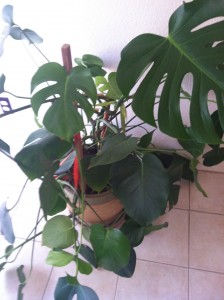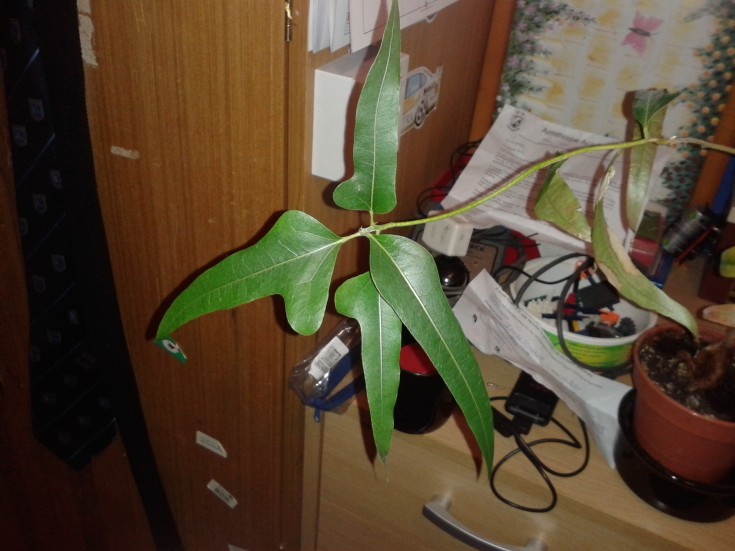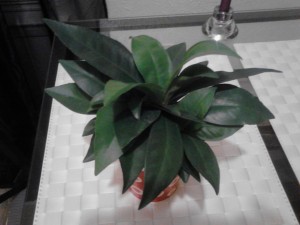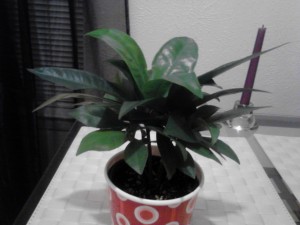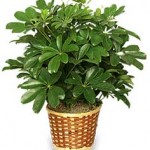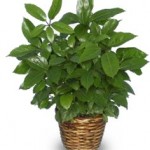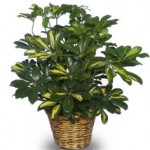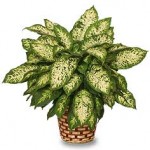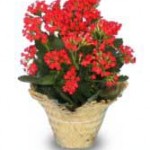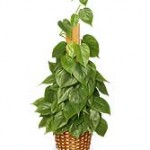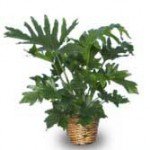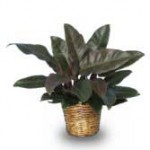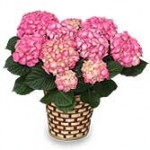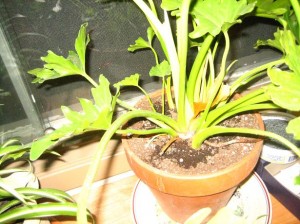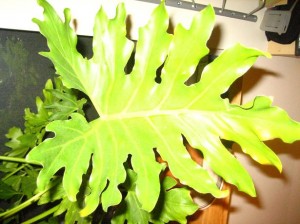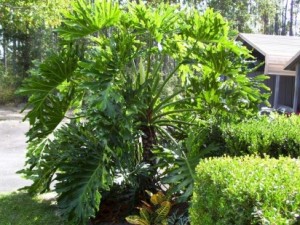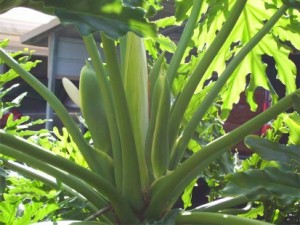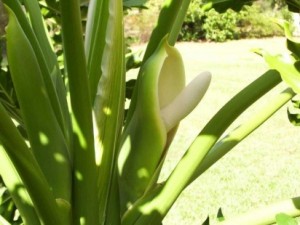Ask the Expert: What type of plant and how to care for it.
This plant was left from my renters. The majority of the leaves were lying on the floor. I put two sticks into the pot to try to give the stems support and tied up with ribbon to have it grow up. Is this the correct size and type of pot? Should I leave the leaves where the lay? I rotated pot as to the leaves might rise when sunlight hits it. What is the name of the plant and how should I take care of it? Alexandra Allen
Flower Shop Network Plant Expert Reply:
Alexandra,
It looks like you actually have two types of Philodendron. The nice thing about Philodendrons is their versatility. So in this case, you could either let the leaves trail downward or give them support to grow up. Although the plant seems fine in its present container, you might want to re-pot the plant into a container about half-again as big. Be sure the new container has drain holes in the bottom and that you use a good basic houseplant potting soil.
If your sticks are giving the plant the support they need, keep using them. If you need more support, your local garden center should have plant totems.
Since this plant flourishes in bright, filtered or indirect light, it will thrive indoors. Just place it in a room with moderate light level. It is best not to place it directly in front of a window. Keep the soil moist, but make sure excess water can drain away from the plant. If the humidity level in your house is low, mist the air around the plant with lukewarm water every day at least once. About once a month give the plant a dose of a well-balanced fertilizer.
Hope this information is helpful.


 Find Your
Find Your 